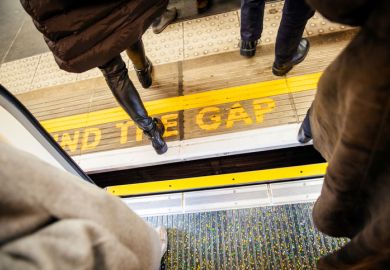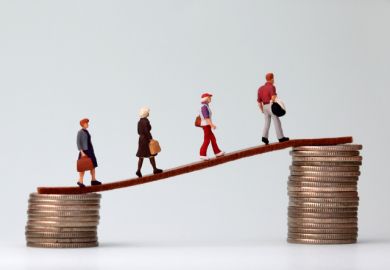An “education arms race” in England has resulted in the higher education progression rate gap between disadvantaged students and their more affluent peers reaching record levels, according to experts.
New figures from the Department for Education (DfE) show that 29.2 per cent of pupils receiving free school meals in state-funded schools progressed to higher education in 2021-22 – up from 28.1 per cent the year before, and the highest rate ever.
However, the progression rate for pupils who did not receive free school meals at the age of 15 rose by much more, to 49.4 per cent.
As a result, the progression rate gap between the two groups jumped by a record amount to 20.2 percentage points.
This metric for gauging social mobility has never been higher and means that the gap is bigger now than when these statistics were first published in 2005-06.
The figures include A-level students who received centre-assessed grades in 2019-20, which the DfE said might explain the increased progression rates.
“We are now facing the starkest gaps in progression to higher education for a generation,” Lee Elliot Major, professor of social mobility at the University of Exeter, told Times Higher Education.
Professor Elliot Major said this was being fuelled by widening societal inequalities in the post-pandemic era, with pupils from disadvantaged circumstances suffering the greatest learning losses during the pandemic.
“This is a sign of the education arms race we have been observing in recent years, in which middle-class families are investing ever more resources to secure a good education for their children and those from less privileged backgrounds are increasingly left behind,” he added.
The progression rate to the most-selective universities for students who received free school meals rose to a record 5.3 per cent in 2021-22.
But the jump was again much bigger for less disadvantaged students, reaching 14.6 per cent – resulting in the gap being larger than ever before.
The sector needed to up its game in efforts to widen access to university by adopting an equity approach, said Professor Elliot Major.
“That means doing more to recognise that many applicants’ grades will not be a full recognition of their academic potential – and at the same time confronting the unconscious biases and social-class barriers that still make higher education so alienating for many young people,” he added.
Kalwant Bhopal, professor of education and social justice at the University of Birmingham, said some schools were able to “game the system” during A-level assessments affected by the pandemic, resulting in middle-class children getting inflated grades.
“If the government is serious about addressing widening participation, we should have a target system for the numbers of students from ethnic minority and marginalised backgrounds attending university, particularly high-tariff institutions,” added Professor Bhopal, who recently co-authored a book on elite universities.
The fact that the figures do not include fee-paying schools is “problematic”, according to her co-author Martin Myers, assistant professor of social sciences at the University of Nottingham, because the true progression rate gap would probably be much higher.
Dr Myers said the data revealed the failure of successive governments to use the expansion of universities to get more disadvantaged students into higher education – and he was not convinced this was a problem that would be addressed in the future.
The data also showed that, for the second year in a row, a majority (53.6 per cent) of female pupils entered higher education by age 19 in 2021-22 – compared with just 40.2 per cent of males.
This means that, along with the free school meals progression gap reaching record levels, the gender progression gap is the largest ever.
Register to continue
Why register?
- Registration is free and only takes a moment
- Once registered, you can read 3 articles a month
- Sign up for our newsletter
Subscribe
Or subscribe for unlimited access to:
- Unlimited access to news, views, insights & reviews
- Digital editions
- Digital access to THE’s university and college rankings analysis
Already registered or a current subscriber?








